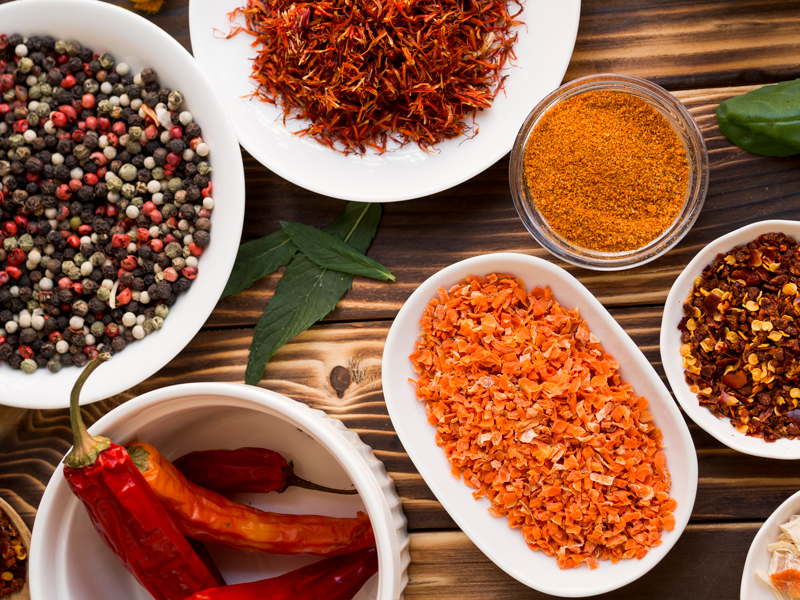
Export of Spices from India: Aromatic Treasures of the East
Introduction
India, known as the “Land of Spices,” has a rich history and tradition of spice cultivation and trade. For centuries, Indian spices have been highly prized around the world for their distinctive flavors, aromas, and medicinal properties. This article explores the history, significance, key varieties, export dynamics, challenges, and future prospects of spice exports from India.
Historical Context
The spice trade from India dates back over 5,000 years, with early records of spice exports to ancient Mesopotamia, Egypt, and Rome. The famed “Spice Route” facilitated the exchange of spices and cultural interactions between the East and the West. Spices such as black pepper, cardamom, and cinnamon were so valuable that they were often referred to as “black gold” and played a significant role in shaping global trade and exploration.
Significance of Spices in Indian Agriculture and Cuisine
Spices are integral to Indian agriculture, cuisine, and culture. India is the largest producer, consumer, and exporter of spices in the world, producing over 75 different types. The country’s diverse climatic conditions allow for the cultivation of a wide range of spices across various regions.
Key Varieties of Exported Spices
India exports a vast array of spices, each with unique characteristics and uses. Some of the most prominent varieties include:
- Black Pepper (Piper nigrum): Often referred to as the “King of Spices,” black pepper is one of the most traded spices globally. It is primarily grown in Kerala, Karnataka, and Tamil Nadu.
- Cardamom (Elettaria cardamomum): Known as the “Queen of Spices,” cardamom is highly valued for its sweet aroma and flavor. It is mainly cultivated in Kerala and Karnataka.
- Turmeric (Curcuma longa): Widely used for its vibrant color and medicinal properties, turmeric is grown extensively in Andhra Pradesh, Maharashtra, and Tamil Nadu.
- Cumin (Cuminum cyminum): This spice is known for its earthy flavor and is cultivated primarily in Gujarat and Rajasthan.
- Coriander (Coriandrum sativum): With its fresh and citrusy flavor, coriander is another essential spice grown in Madhya Pradesh, Rajasthan, and Uttar Pradesh.
- Chili (Capsicum spp.): India is one of the largest producers and exporters of chili, which is grown in Andhra Pradesh, Maharashtra, and Karnataka.
Export Dynamics
India’s spice export industry has shown impressive growth over the years, driven by several factors:
- High Quality and Variety: The diverse range of high-quality spices produced in India meets the varied demands of international markets.
- Government Initiatives: The Indian government supports spice exports through the Spices Board of India, which provides guidance, quality control, and promotional activities.
- Global Demand: The increasing popularity of Indian cuisine and the rising awareness of the health benefits of spices have boosted global demand.
In the fiscal year 2020-2021, India exported approximately 1.5 million metric tons of spices, valued at over USD 4 billion. Major export destinations include the United States, Vietnam, China, the United Arab Emirates, and Malaysia.
Challenges in Spice Export
Despite its success, the spice export industry in India faces several challenges:
- Quality Control: Ensuring consistent quality and meeting international standards is crucial for maintaining market competitiveness.
- Climate Change: Changing weather patterns and environmental concerns pose risks to spice cultivation.
- Market Competition: India faces competition from other spice-producing countries, necessitating continuous improvement in production and marketing strategies.
Future Prospects
The future of spice exports from India is bright, with several initiatives aimed at sustaining and enhancing growth:
- Sustainable Farming: Emphasizing organic farming practices and sustainable agriculture to improve quality and environmental impact.
- Research and Development: Investing in research to develop high-yield and disease-resistant spice varieties.
- Market Expansion: Exploring new markets and strengthening existing trade relationships to boost export volumes.
Conclusion
India’s dominance in the global spice market highlights the importance of these aromatic treasures in the country’s economy and cultural heritage. By addressing challenges and leveraging opportunities, India can continue to thrive as a leading exporter of spices, bringing the rich flavors and fragrances of the East to kitchens around the world.